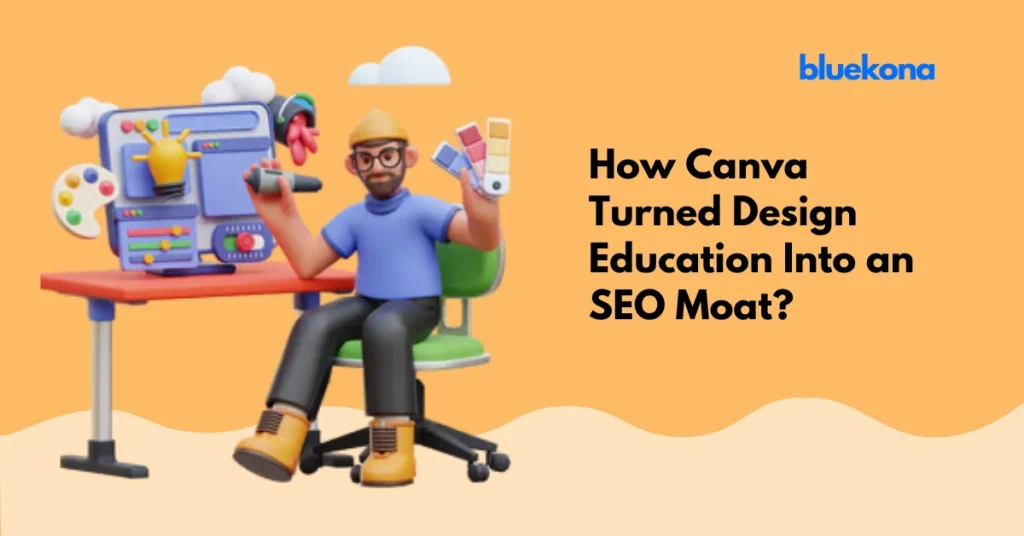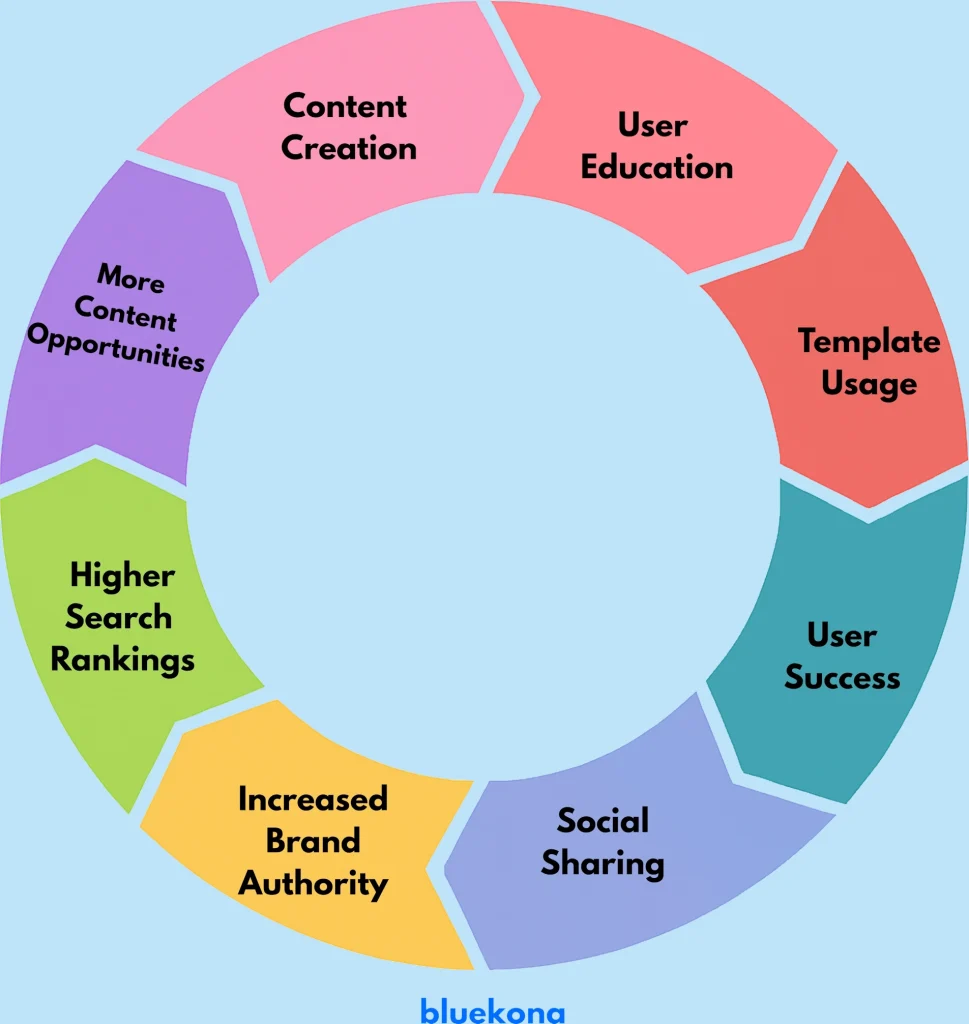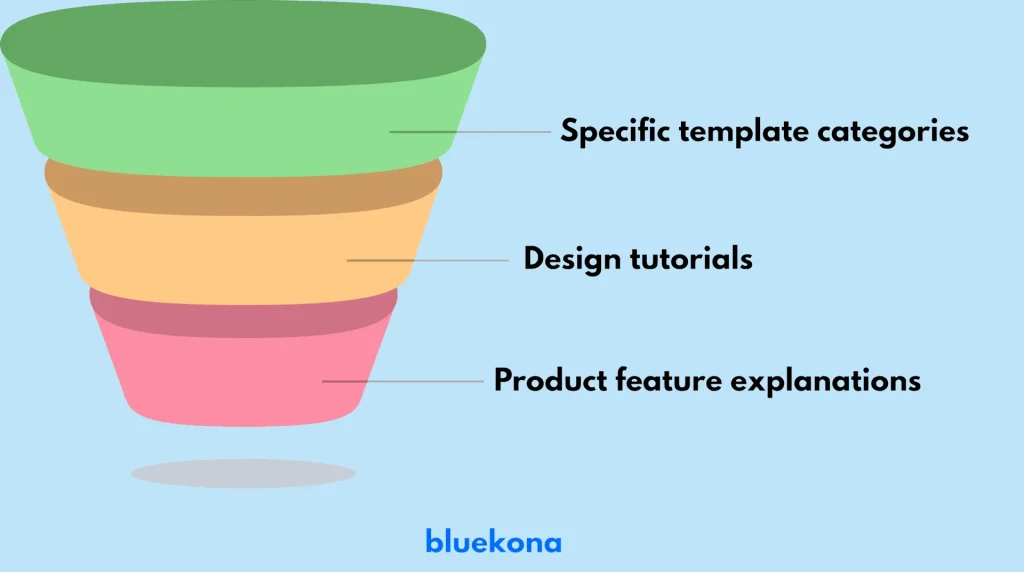
When someone searches for “how to make a resume,” Canva doesn’t just rank, it leads.
Their blog post explains the process. The embedded YouTube video demonstrates it. Their templates allow users to start right away. By the time someone finishes reading, they are already using Canva’s o build their resume and are halfway to becoming paying customers.
That’s not just content. That’s a smart strategy.
While most SaaS companies spread their efforts thin—blogs in one place, templates in another, tutorials lost on YouTube, Canva created an interconnected, education-focused system. Each type of content works together to attract visitors, teach results, and encourage product usage.
The outcome? A strong content barrier that competitors cannot surpass. They would need to rebuild the entire system.
In this blog, we’ll reverse-engineer how Canva created this stronghold. From their SEO blog structure to their YouTube-blog combinations that succeed in search engines.
We will also discuss how to create a similar barrier in your niche, even if you’re starting from scratch.
Let’s break it down.They tapped into a fundamental truth
Most design tools focus on their features, but Canva took a different approach by emphasizing outcomes.
They tapped into a fundamental truth. The issue with design isn’t about the tools itself, it’s about the knowledge gap.
You don’t search, “designing tool with great gradient controls.” Instead, you search, “I want to create a resume that looks good”. This understanding influenced their entire content strategy.
Rather than starting with what their product can do, Canva built a system that teaches you exactly what you want to achieve and then helps you get there, all within the Canva platform.
When it comes to SaaS onboarding, most focus on just the interface. But Canva? They’re all about the outcomes.
They realized that most people avoid design not because they can’t do it, but because they don’t believe they can. Every tutorial, every blog post, and every Design School guide aims to reduce fear, simplify the process, and show users, “you can do this.”
Quotes like “It’s easier than you think to design a flyer from scratch” build confidence, and it works.
It converts unsure visitors into enthusiastic first-time creators
Canva’s system operates on three levels:
Each layer connects to the next. Each one develops skills and creates reliance on the product.
This is why Canva doesn’t need to sell hard. Their system guides users into the product. Templates are directly integrated into tutorials. Calls to action don’t interrupt the content. Infact, they are part of the content.
It’s learn, try, succeed, all within a closed loop.
This strategy solves three problems at once
This is how Canva built a growth engine by making “learn” and “use” the same step.
While most brands see education as an afterthought, Canva turned it into their competitive advantage.
Canva doesn’t see SEO as just a way to get traffic. They see it as an ecosystem, where each page, template, and tutorial supports the others.
At the core of this approach is a self-sustaining flywheel.
Educational content drives template usage. Template success generates user data. Data fuels smarter content creation. Everything is indexed, linked together, and optimized for intent.

The outcome? It was not just about search rankings. It’s about achieving lasting organic strength and creating an SEO advantage that competitors can’t easily replicate.
While most SaaS tools compete for broad terms like “best design software,” Canva explored the complete range of real user needs
This detailed targeting reaches users at every stage of their design journey, from total beginners to niche professionals. It connects them directly to Canva’s template ecosystem.
Each keyword cluster serves as a high-conversion gateway into the product.
This is where Canva really stands out from the crowd.
Their internal linking is not random. It’s a carefully crafted funnel that takes you to the bottom even before you realize it

Let’s see how this works in practice. The page how to make a resume for your first job, links to entry-level resume templates with the CTA “Choose a free template to get started”. At the end of this page, you see other follow-up guides like “How to write a cover letter”
This internal structure boosts:
It’s all about shaping the user journey as an SEO strategy. And it really scales.
Canva builds topical clusters instead of standalone articles. Their resume hub includes
Each piece supports the others and links across the cluster. And the benefits are clear:
It’s a perfect blend of SEO, user experience, and funnel strategy.
Sure, anyone can whip up a blog post on “how to make a resume.” But let’s be real,it’s almost impossible to create a flywheel as effective as Canva’s.
To pull that off, you’d need:
Most people won’t go the extra mile. But Canva already has.
Canva built its content moat over years of hard work involving writers, SEOs, video editors, template designers, and endless revisions.
With bluekona, you can achieve the same level of success, minus the massive team.
It automates the key elements of Canva’s strategy such as, repurposing content, distributing it across different formats, internal linking, and tracking performance.
What took Canva years to develop, you can establish in just a few months.
Your top-performing content is already doing its job. bluekona helps it shine everywhere.
From a single long-form article, you can effortlessly create 10s of content.
Stop playing the guessing game. bluekona’s AI-driven content performance engine shows you:
You’ll have a clear roadmap of where to invest your efforts. And most importantly, you’ll know what to cut.
bluekona groups your content around themes, similar to Canva’s resume system, and fills in the gaps.
It identifies internal linking opportunities to share SEO value. It creates hub-and-spoke content calendars to increase domain authority. It suggests long-tail keywords based on actual user behavior and ranking potential.
What once took SEO strategists weeks to plan, bluekona accomplishes automatically.
You provide the expertise, and bluekona transforms it into a content system that educates, scales, and compounds
Start with a free bluekona Content Performance Audit.
Identify your highest-performing educational assets.
See where your ecosystem is strongest and where it’s lacking.
Get a customized roadmap to scale what’s working and improve what’s not.
Find your best educational content. Turn it into your growth engine.

Dec 19, 2025Anjana Devi
78% people prefer learning about products through video but the catch is only 31% will finish a poorly-edited one. The rest? Gone — swiping to your competitor, clicking away, or worse, teaching the algorithm your content isn’t worth surfacing. Editing is no longer about looking slick. It’s about being seen, shared, and searched. The SMBs […]

Dec 12, 2025Anjana Devi
Most brands try to buy attention. Gymshark built a $1.45B empire by earning it. Founded in 2012 in a garage by teenager Ben Francis, Gymshark didn’t win by outspending Nike or Adidas. They won by out-creating them—turning influencers into athletes, community into currency, and content into the engine of compounding growth. Paid ads? They used […]

Dec 5, 2025Anjana Devi
“Post consistently! Be authentic! Engage more!” If I had a dollar every time someone lobbed that cookie-cutter advice at struggling creators, I’d have enough to buy Twitter back from Elon. The problem isn’t that it’s wrong—it’s just about as useful as telling someone to “be yourself” on a first date. Like, thanks, but what does […]